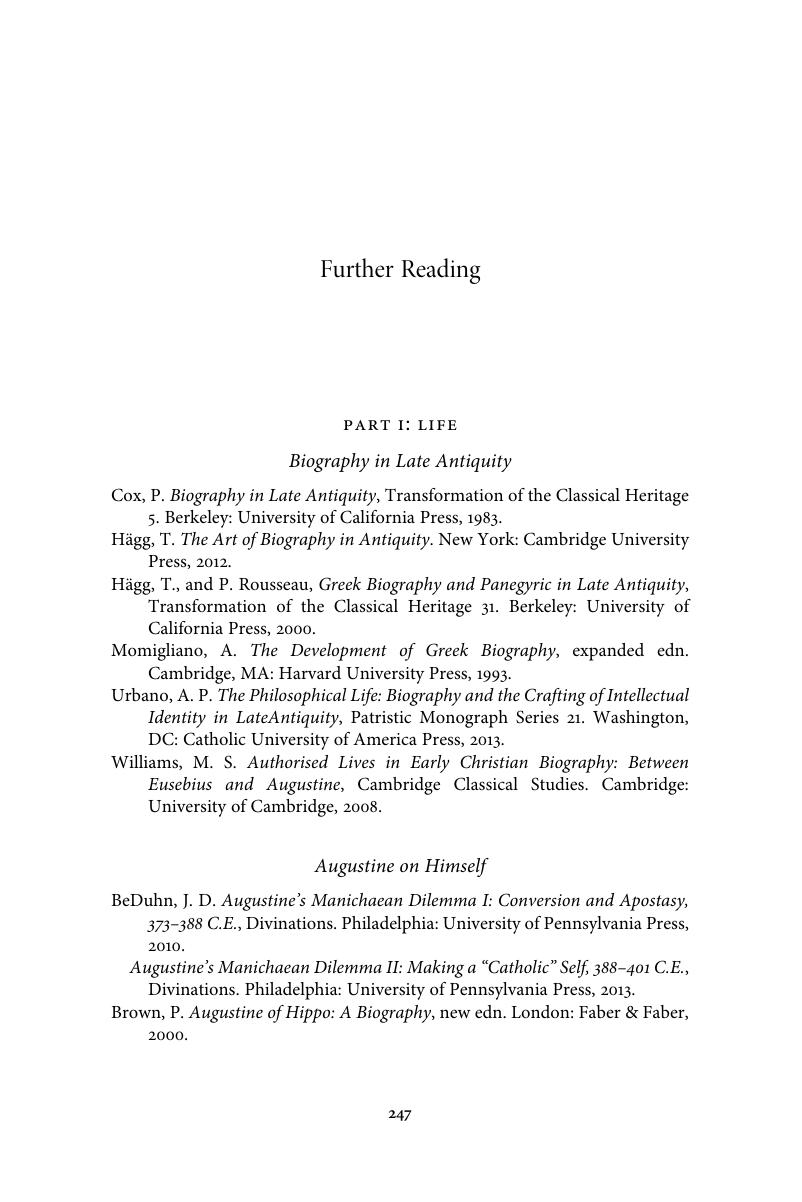Book contents
- Augustine in Context
- Augustine in Context
- Copyright page
- Contents
- Contributors
- Acknowledgments
- General Abbreviations
- Abbreviations of Augustine’s Works
- Introduction
- 1 Augustine in Context and Augustine on Context
- Part I Life
- Part II Literary and Intellectual Contexts
- Part III Religious Contexts
- Part IV Political, Social, and Cultural Contexts
- Part V Reception
- A Note on Augustine’s Works
- Further Reading
- Index
- References
Further Reading
Published online by Cambridge University Press: 18 December 2017
- Augustine in Context
- Augustine in Context
- Copyright page
- Contents
- Contributors
- Acknowledgments
- General Abbreviations
- Abbreviations of Augustine’s Works
- Introduction
- 1 Augustine in Context and Augustine on Context
- Part I Life
- Part II Literary and Intellectual Contexts
- Part III Religious Contexts
- Part IV Political, Social, and Cultural Contexts
- Part V Reception
- A Note on Augustine’s Works
- Further Reading
- Index
- References
Summary

- Type
- Chapter
- Information
- Augustine in Context , pp. 247 - 260Publisher: Cambridge University PressPrint publication year: 2018

